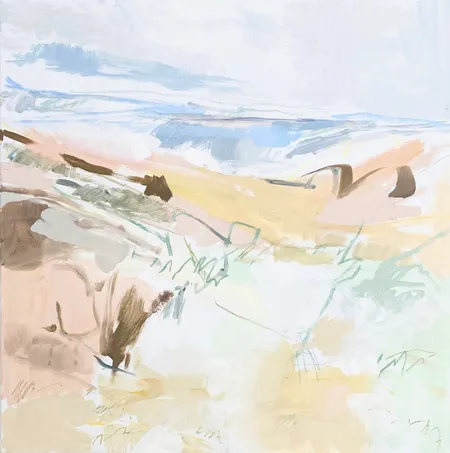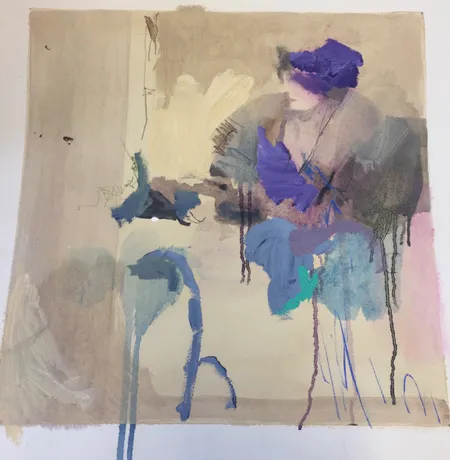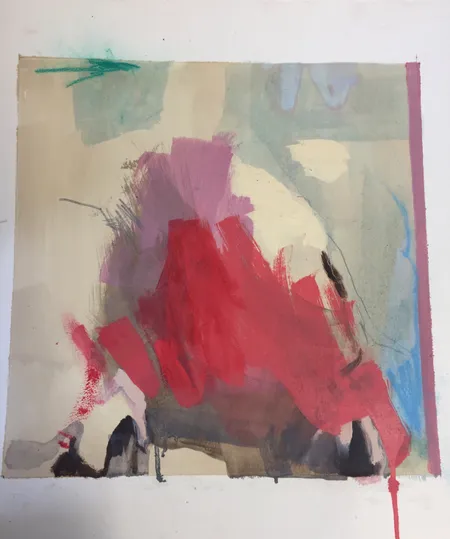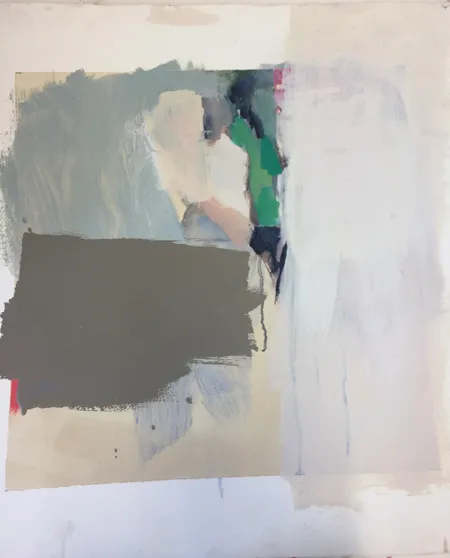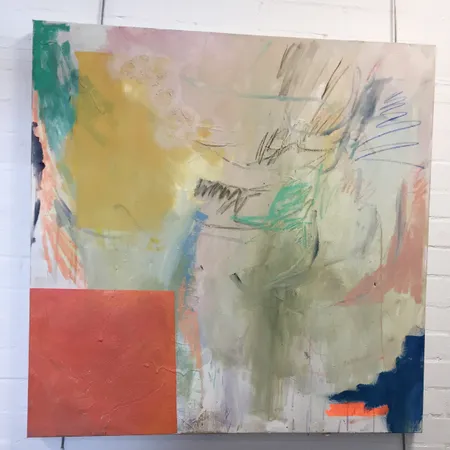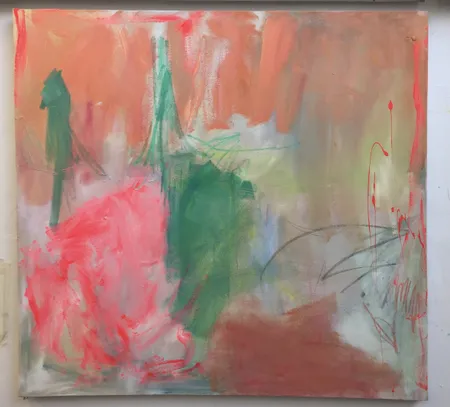Hannah Eavis

University: University Of Brighton
Graduation Year: 2017
New Blood Art Commentary
The paintings of Hannah Eavis contain an exciting collaboration of texture, colour, and mark-making. Each of these aspects fights for dominance, and the effect is an energic dynamism. Fast, deliberate scrawls of paint and pastel dance across the surface, disrupting the equilibrium of blended flat colour. Evidence of layering can be seen in the dried, dripped texture hidden beneath washes of oil paint and dry-brush scrapes of colour. Each layer seems to aggravate the last – pushing, futilely, for authority. Similarly, vapid, soporific tones clash with loud, obnoxious flashes of luminous colour - pushing and pulling against each other. The result is a fantastic play of texture, colour, and form. Furthermore, Eavis occasionally experiments with semi-abstract figuration in her work to which themes of familiarity and abstraction intermingle and push the relationship of form and materiality. Eavis’ work exhibits an interest in the artistic process suggestive of contemporary artist Richard Aldrich who wrote, in 2006, that “painting is an illustration, or proof rather, that a creative force exists.” This is true of Eavis’ work, which tactically builds layers of colour and marks to transform and reveal the process of creation.
Artist Statement
My work is concerned with mark making, colour and the process of painting itself. This series of paintings is inspired by the Cornish coastal landscape, I’m drawn to the point where land meets sea. My use of reference is indirect, as the paintings originate from studies, made in part using small collage pieces and mix media. I then work from these studies to create my larger scale works. Some of the marks therefore are incidental or accidental and come out of this process of working. The paintings then, have gone through several stages of reduction, deconstruction and transformation. I take my ideas from primary and secondary sources. In these initial studies I begin to find solutions for shape, depth, colour and structure, all of which go through a further process of transformation in the during development of the larger scale pieces. I aim to create an abstract painting that retains a sense of familiarity, thereby pushing the relationship of form and materiality. The soft colours derive from the particular quality of light in this extraordinary coastal landscape. I like to inject small glimpses of richer colours as key notes and focal points and punctuation within this landscape and these might derive perhaps from a blast of radiant yellow of gorse, or a hint of pink from early heather, or perhaps a line of brilliant light on the water.
I like to use both the drawn mark and the painted mark, each are essential in the making of these paintings. I enjoy the tension the comes out of the fight for dominance between these two different kinds of marks, and the effect is an energetic dynamism. Fast, deliberate scrawls of paint, pastel and pencil marks, dance across the surface, disrupting the equilibrium of blended flat colour. I build up a surface with layers of marks, washes of oil paint and dry-brush scrapes of colour. Each layer seems to aggravate the last.

